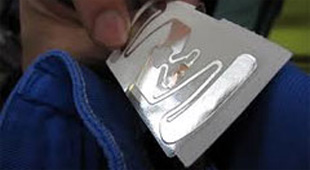Australian retailer Kmart – once connected to the now defunct US retail chain, but no longer – is moving down the path of being one of the most aggressive global retailers in terms of RFID adoption.
Supply Chain Digest Says... |
 |
| Key to success has been getting support from companies across the globe for source tagging. While that is fairly straight forward for apparel and some other categories, others are problematic. |
 |
What do you say? |
| Click here to send us your comments |
 |
| Click here to see reader feedback |
| |
|
|
According to a story on the ITnews.com web site, the Kmart down under is in the midst of an initiative to have all of the goods it sells to be RFID tagged by vendors, delivering what it believes will be major operational benefits – but requiring some major changes to its store shelving and displays.
Kmart operates more than 300 store across Australia.
The plan is to have the tagged good be read by a robot that traverses store aisles at night, providing it hopes highly accurate inventory levels in a sector known historically for lousy accuracy stats. That will be a good thing generally, but is essential in an ecommerce world to support on-line orders, pick up at store, store fulfilment, etc.
At a recent industry conference, a Kmart manager told the audience that all items would be tagged and read by the robots in all its stores by Christmas.
Just one problem: still here in 2022, almost 20 years since the EPC form of RFID was launched, metal can still wreak havoc on performance by RFID readers – and many of Kmart’s shelved and fixtures use a lot of metal, including racks in the back store room.
What to do? How about replacing metal shelving with racks made of wood in main store area. In the back store room, Kmart is placing foam mats under the metal shelving which gives it a barrier to the metal.
But there are other challenges. Kmart says it continues to work on improving the certainty of tag reads by the robot – named TORY - as it traverses the store each night.
(See More Below)
|
CATEGORY SPONSOR: SOFTEON |
|
|
| |
|
|
 It turns out the first pilot of RFID by Kmart was actually in Seattle, at one of the Anko stores it operates there. But the technology was soon moved to Australia, with some modifications, as the Anko stores have a smaller footprint and lower levels of inventory. It turns out the first pilot of RFID by Kmart was actually in Seattle, at one of the Anko stores it operates there. But the technology was soon moved to Australia, with some modifications, as the Anko stores have a smaller footprint and lower levels of inventory.
Key to success has been getting support from companies across the globe for source tagging. While that is fairly straight forward for apparel and some other categories, others are problematic. Cutlery sets, for example, required specific vendor training on tag attachment, since the items themselves could cause metallic interference.
The project manager for the roll out, Adam Gradon, says that the deployment of RFID technology had “provided a foundation for a multi-year transformation of the instore customer experience” at Kmart Australia, which would deliver “operational efficiencies and even greater value for our customers."
Any reaction to Kmart's RID initiative? Let us know your thoughts at the Feedback button below.
Your Comments/Feedback
|